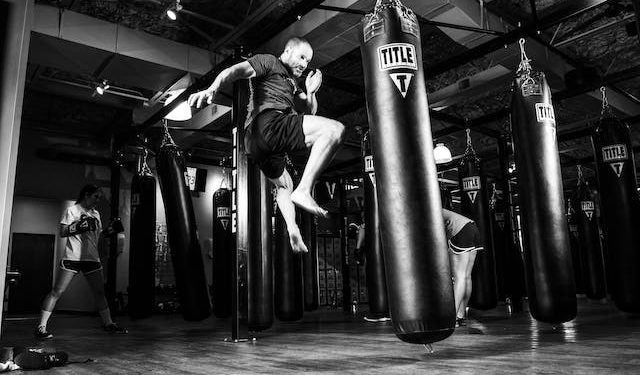The adult martial arts community has drawn those looking for total growth via the pursuit of physical mastery, mental discipline, and self-defense abilities. But despite the appeal of these disciplines, worries about preventing injuries frequently act as a barrier. This guide seeks to answer often-asked questions about injury avoidance in adult martial arts by providing in-depth analysis and useful tactics. We'll explore injury hazards, preventative methods, and holistic approaches by looking into five commonly asked concerns, enabling fans to start their martial arts adventure with safety and confidence.
Understanding Adult Martial Arts
Understanding adult martial arts encompasses a diverse array of disciplines catering to individuals seeking physical fitness, mental fortitude, and self-defense skills. These martial arts provide a diverse range of methods and ideologies, such as Karate, Taekwondo, Jiu-Jitsu, and more. Beyond only fighting, adult martial arts cultivate self-control, self-respect, and perseverance as well as a strong bond between the body and mind. Taking up these activities as an adult promotes self-improvement, increased confidence, stress reduction, and physical health. Every martial art style has its distinct history, set of tenets, and advantages, meeting the needs and desires of practitioners looking for a comprehensive approach to their health in a variety of ways.
Common Concerns About Injuries in Adult Martial Arts
Common concerns about injuries in adult martial arts often stem from misconceptions or generalizations about the practice. Martial arts don't naturally lead to injuries, even though they need intense training and physical contact. However, these worries are influenced by several factors:
1. Perception of High Impact
Martial arts are generally associated with high-risk activities because of their dynamic motions and deliberate attacks.
2. Misconceptions from Media
Issues about the frequency of injuries get worse when martial arts are portrayed in the media as being excessively aggressive.
3. Lack of Proper Training
Particularly for beginners, injuries may result from poor technique, insufficient training, or a lack of supervision.
4. Overexertion or Overtraining
Injuries might result from exercising too hard without enough rest or from pushing past one's boundaries.
5. Sparring and Contact
If sparring or contact activities are not performed with the appropriate care and technique, the risk of injury can increase.
Factors Contributing to Injuries
Adult martial arts injuries are caused by several reasons, which emphasizes the significance of a targeted approach to safety:
1. Overtraining
Overtraining without sufficient rest or recuperation time can cause exhaustion and raise the risk of injury.
2. Improper Technique
Injuries can occur during practice or sparring because improper form or technique can strain muscles or joints.
3. Inadequate Warm-up/Cool-down
Ignoring your warm-up and cool-down exercises might reduce your flexibility and raise your risk of sprains or tears in your muscles.
4. Equipment Misuse or Lack Thereof
Avoidable injuries may occur from improper usage of protective gear, improper training equipment use, or a lack of appropriate gear.
5. Intensity and Progression
Injuries and excessive exercise can result from increasing training intensity suddenly or moving too quickly without first acquiring fundamental skills.
The chance of injuries in adult martial arts is greatly decreased by addressing these variables through appropriate training methods, steady advancement, attention to technique, sufficient warm-ups, and making sure the right equipment is used.
Strategies for Injury Prevention
In adult martial arts, injury prevention is approached from multiple perspectives, incorporating various strategies to protect practitioners during practice and instruction:
1. Training Techniques
Stressing appropriate form and technique to lessen physical stress on the body and lower the possibility of injury when performing strikes and movements.
2. Physical Conditioning
Concentrating on specific exercises that target strength, endurance, flexibility, and core stability to get the body ready for martial arts training and avoid injuries.
3. Pre- and Post-Training Routines
Including extensive warm-ups to prepare the muscles and joints, as well as efficient cool-downs to promote healing and ward off discomfort after training.
4. Rest and Recovery
Acknowledging the significance of recovery in injury prevention, making sure you get enough sleep, and allowing enough time for rest in between training sessions.
5. Nutrition and Hydration
Keeping a healthy diet to meet physical demands and making sure you're well hydrated to perform at your best and avoid injuries.
Injury Management and Rehabilitation
Injury management and rehabilitation in adult martial arts include essential actions to guarantee safe recovery and a seamless return to training:
1. First Aid and Professional Assistance
First aid procedures should be applied right away for typical martial arts injuries such as sprains, bruises, and strains. obtaining a skilled medical examination to enable appropriate treatment for severe injuries.
2. Rest and Recovery
Healing depends on giving the damaged region enough time to rest. During the healing process, it's critical to stay away from activities that worsen the injury.
3. Gradual Rehabilitation Exercises
Taking part in rehabilitation activities and regimens as directed to restore mobility, flexibility, and strength in the injured area. With no chance of reinjury, these workouts provide a safe return to training.
4. Monitoring Progress
To avoid setbacks, it is recommended to periodically evaluate the healing process and to gradually resume martial arts exercises under the supervision of a professional.
5. Modification of Training
Modifying routines of exercise or methods as necessary to allow for the healing process and stop additional damage to the injured area.
Mental Preparation and Mindfulness
Mental preparation and mindfulness play crucial roles in adult martial arts, making a substantial contribution to the overall performance and injury prevention of practitioners:
1. Focused Mindset
Practicing mental focus and concentration during training sessions lowers the risk of accidents or injuries by keeping practitioners aware of their movements and surroundings.
2. Stress Reduction
The application of mindfulness practices in martial arts training helps practitioners approach training with less stress and a clear mind, which reduces the chance of injuries brought on by mental strain or distractions.
3. Awareness of Body and Technique
The application of mindfulness techniques ensures correct form and technique by encouraging practitioners to be in tune with their bodies. The likelihood of injury from improper motions or overexertion is decreased by this increased awareness.
4. Emotional Control
Martial arts training promotes emotional regulation, allowing practitioners to remain composed even under pressure, which lowers the possibility of reckless or impulsive behaviors that could result in injury.
5. Visualization and Mental Rehearsal
By mentally practicing motions and circumstances, visualization techniques help in the refinement of techniques and responses, resulting in a safer and more controlled execution during real practice or sparring sessions.
Conclusion
In conclusion, The world of adult martial arts requires a holistic approach that includes proper training techniques, physical conditioning, awareness, and an emphasis on general well-being to navigate while prioritizing injury prevention. Although many adult martial arts practitioners worry about getting hurt, these risks are greatly reduced by knowing and using efficient injury prevention techniques.
Through a focus on technique, conditioning, mental toughness, and a well-rounded training regimen, practitioners can confidently and safely begin their martial arts adventure. Recall that adult martial arts promote mental discipline, stress alleviation, and personal development in addition to their many physical advantages. Accept this trip with awareness and use the all-encompassing techniques discussed here to ensure a safer and injury-free practice while reaping the many benefits of adult martial arts.























